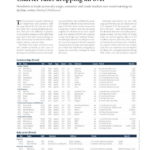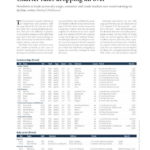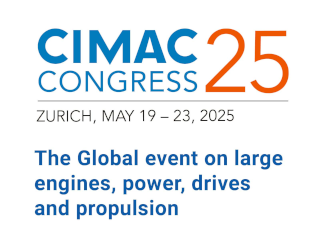Slowdown in trade across dry cargo, container and crude markets sees vessel earnings in decline, writes Michael Hollmann
The first quarter is usually challenging for shipowners and operators, with the cargo lull in the Far East due to[ds_preview] Chinese New Year causing heightened anxiety. This year is no different. A glimpse at our market compass on the right-hand page shows that spot vessel earnings on time charter basis nosedived for bulkers, tankers and for container ships.
The Baltic Dry Index was down some 26% month-on-month as this issue of HANSA went to press. Of note, it was not the largest vessels but panamax and smaller geared bulkers that exhibited the greatest volatility with falls in trip charter earnings of 30-40% down to lows unseen for a long time. It leaves only tiny operating surpluses for shipowners to serve capital costs. For modern 180,000 dwt capesize vessels, the drops were relatively moderate although rate levels are still poor overall. Across all segments, brokers reported a sharp decline in cargo stems during January which left shipowners struggling to secure any cover they could get to avoid idle times.
Although expectations for dry bulk cargo growth this year are still positive at 2.0% (against 2-3% fleet growth) – similar to last year – latest developments on the demand side have set market participants on alert. On top of the US-China trade war and its negative effects on US soyabean exports, there has been a general slowdown in Chinese dry commodity imports which only became evident early this year. Seaborne iron ore imports in China saw a marginal decline during 2018 while coal and soyabean imports also trended weaker towards the end of the year. According to shipbroker Simpson Spence Young (SSY), the result was that the fourth quarter of 2018 saw the largest quater-on-quarter drop on record (in absolute terms) in China’s combined imports of iron ore, coal and grains.
The result was a fall in fleet utilisation and bulk carrier earnings that seems to be reaching its climax now. The question is how long it will take trade growth to gain traction again and to what extent China inbound trades will continue to expand.
Although steel production continues to rise following a 6.6% increase in China last year and although miners – especially in Brazil – bring on more capacity to serve Chinese customers, there are signs of saturation. Clarksons Research forecasts no more than 0.4% growth in Chinese iron ore imports this year. Coal volumes are even expected to fall by 2.0% due to curtailments and the »greening« of China’s energy sector.
Demand for soyabeans in China may also remain muted due to weaker demand for animal feed after the nationwide outbreak of African swine fever, SSY warned. As a result, sentiment in dry bulk shipping has taken a hit as illustrated by the sharp deterioration in freight futures prices. The time charter average for capesize vessels was trading at only 13,000-14,000 $/day for the first and second quarters at the end of January while those for panamaxes, supramaxes and handysize bulkers were all hovering below 10,000 $/day.
Positive expectations right now are more or less limited to trades served by those smaller vessels. SSY highlights expected increases in coal demand in India and rising grain imports in southeast Asia in its latest monthly review.
Meanwhile, the shortsea bulk trades in Europe commenced the year in a muted fashion, too, with a backlog of spot tonnage weighing down on freights. The European Short Sea Index of market research firm BMTI was down by around 2.0% month-on-month on 23 January. While freight levels in North Europe were relatively stable, the Mediterranean and Black Sea/Azov region showed falls of 3.0-5.0% month-on-month.
Dwindling OPEC output
The rally in crude tanker spot earnings that started back in autumn also lost steam in January as peak season demand seemed to begin to fade while the OPEC production curb saw spot cargoes dwindle in the Middle East Gulf. As per 25 January, time charter equivalents for VLCC and for aframaxes in the spot market were down by 32% and 31%, respectively, month-on-month. Suezmaxes even suffered a 48% drop.
Currently, brokers consider the market as fairly positional, with some pockets of strength (US Gulf and Caribs for VLCC and aframaxes) bucking the downward trend. General expectations for the crude tanker spot market are still positive based on 2-3% fleet growth vesus 3-4% trade growth this year. However, analysts such as Fearnley Securities now say that they don’t expect the »next supercycle« in tanker earnings to kick in until the second half of the year.
Sentiment in the container ship market was put to the test once more as charter rates for all vessel types from panamax down to feeder type resumed their downward trajectory. Fixing activity was not too bad which – combined with the reactivation of liner-controlled vessels – caused the idle container ship fleet to fall to around 560,000 TEU (2.5% of worldwide fleet). It was not enough, though, to halt the pressure on rates. The few segments that were bucking the trend were high-reefer 2,500 TEU ships and large gearless vessels of 8,000+ TEU.
Michael Hollmann



















